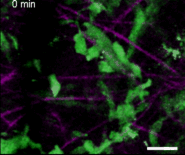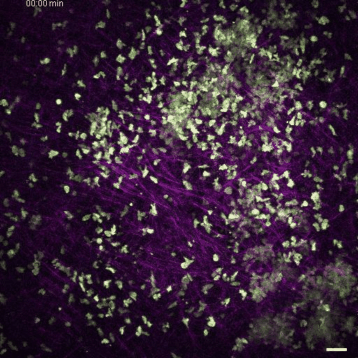The van Rheenen group studies the identity, behavior, and fate of cells that drive tumor initiation, progression, metastasis and the development of therapy resistance. These populations of cells are difficult to study since they are rare, and their behavior (e.g. migration) and traits (e.g. stemness) change over time. To be able to study these dangerous cells, we have developed microscopy techniques to visualize individual cells in real-time in living animals, referred to as intravital microscopy. For example, we developed small imaging windows that can be surgically implanted in mice giving visual access to tissues with cellular precision for several weeks. Using intravital imaging, the van Rheenen lab revealed multiple important factors within the single cell heterogeneity that are crucial in the processes of tissue homeostasis, tumor initiation and tumor progression.
Our research focuses on four areas are
(1) The cellular mechanisms of tissue development and homeostasis, tumor initiation, and tumor progression;
(2) The cellular mechanisms of migration and metastasis of cancer;
(3) The role of microvesicles in tumor heterogeneity and tumor progression;
(4) The molecular and cellular mechanisms of chemotherapy resistance and side effects.
High resolution intravital microscopy:
Our group develops and utilizes state-of-the-art imaging techniques to visualize the adaptive properties of the few dangerous cancer cells (e.g. stem and/or migratory cells) within the large population of non-metastasizing and differentiated cancer cells. We combine the latest genetic tumor models with intravital imaging (the visualization of single cells in living mice). For this, we have developed techniques to trace individual tumor cells within the primary tumor and at distant organs in a living mouse for several weeks at subcellular resolution.
Final conclusions:
The unique intravital imaging techniques developed in our lab enabled us to gain detailed information on the cellular behavior at single-cell level during both tissue homeostasis and tumor initiation and progression. This unique way of studying these processes has led to major breakthroughs in the fundamental understanding of cancer.

Intravital microscopy movie of migratory T cells
